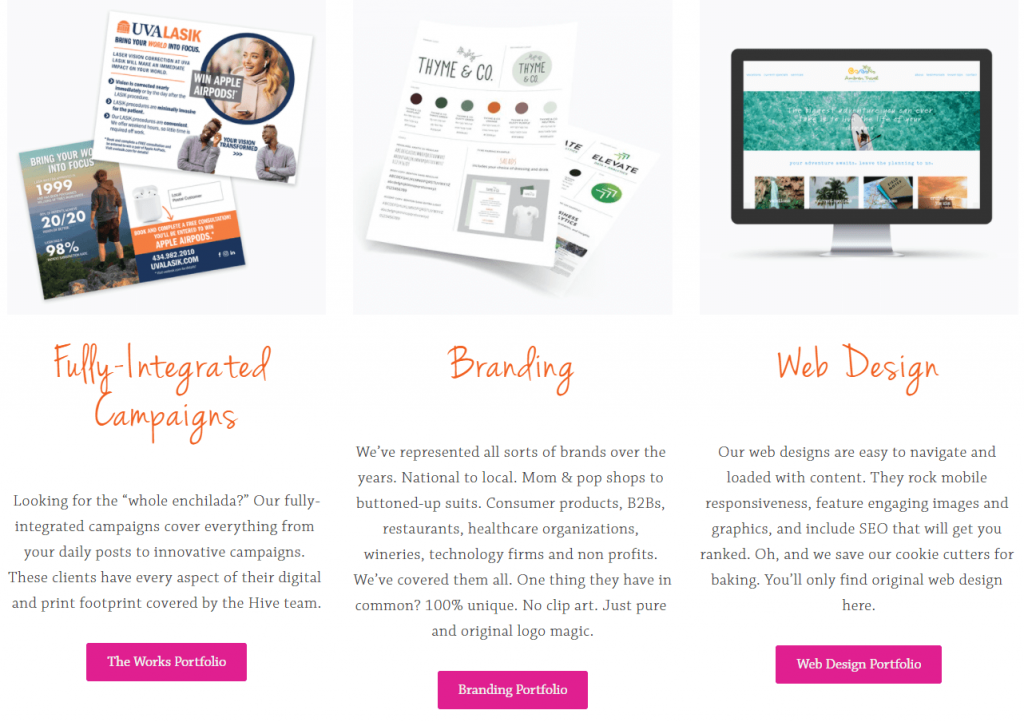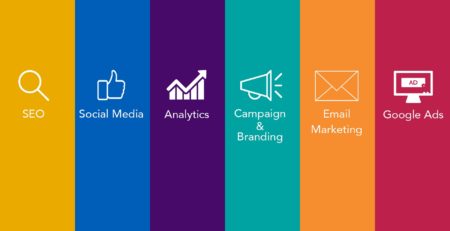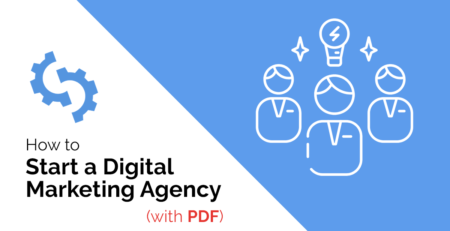How To Create A Digital Marketing Portfolio?
Welcome to the world of digital marketing! Have you ever thought about creating a digital marketing portfolio? Wondering how to showcase your skills and experience in this exciting field? Well, you’ve come to the right place! In this article, we’ll explore the ins and outs of creating a captivating digital marketing portfolio that will grab the attention of potential employers or clients.
In today’s digital age, a strong online presence is essential for any aspiring marketer. Whether you’re a seasoned pro or just starting out, a carefully crafted digital marketing portfolio can help you stand out from the competition. It’s like your own personal marketing campaign, highlighting your skills, achievements, and the results you’ve achieved for your clients or employers.
Now, you might be wondering, “But how do I create a digital marketing portfolio?” Don’t worry, we’ve got you covered! In this article, we’ll guide you through the step-by-step process of creating an impressive portfolio that showcases your expertise in various digital marketing disciplines, such as social media marketing, search engine optimization (SEO), content marketing, and more.
So, whether you’re a student looking to kickstart your career in digital marketing or a professional wanting to take your portfolio to the next level, get ready to learn valuable tips and tricks to create a standout digital marketing portfolio that will leave a lasting impression. Let’s dive in!
- Start by identifying your best work and gather relevant data.
- Create a professional website or use an online platform for your portfolio.
- Showcase a variety of projects and highlight your contributions.
- Include case studies with measurable results to demonstrate your impact.
- Optimize your portfolio for SEO and make it easy to navigate.
- Promote your portfolio through social media and networking events.
Create a Digital Marketing Portfolio: Showcasing Your Skills and Expertise
In the world of digital marketing, having a strong portfolio can make all the difference in landing your dream job or attracting top clients. Your portfolio is more than just a collection of your work; it’s your opportunity to showcase your skills, expertise, and unique approach to marketing. In this article, we will dive into the process of creating a digital marketing portfolio that stands out, from selecting the right pieces to crafting compelling descriptions. Whether you’re a seasoned marketer or just starting out, this guide will provide you with valuable insights to take your portfolio to the next level.
The Power of a Well-Crafted Digital Marketing Portfolio
Your digital marketing portfolio is your personal brand’s calling card. It’s the first impression potential clients or employers will have of your work. A well-crafted portfolio can not only demonstrate your skills and knowledge but also showcase your creativity, attention to detail, and ability to generate results. With the increasing demand for digital marketing professionals, a standout portfolio can give you a competitive edge in a crowded job market. Furthermore, a portfolio can serve as a valuable resource for demonstrating your expertise and securing new clients if you’re a freelancer or own a digital marketing agency.
Choosing the Right Pieces for Your Portfolio
When building your digital marketing portfolio, it’s essential to curate your work strategically. Rather than including every project you’ve ever worked on, focus on showcasing your best and most relevant work. Consider the following factors when selecting the pieces to include:
1. Relevance: Choose projects that align with the specific skills or areas of expertise you want to highlight. For example, if you specialize in social media marketing, include examples of successful social media campaigns you’ve managed.
2. Diversity: Display a range of projects that demonstrate your adaptability and versatility. Include examples from different industries, target audiences, and marketing channels to showcase your ability to create effective campaigns across various contexts.
3. Results: Highlight projects that have produced measurable results. Include data and metrics that showcase the impact of your work, such as increased website traffic, higher conversion rates, or improved brand awareness.
4. Uniqueness: Select projects that showcase your creativity and innovative thinking. Include examples that demonstrate your ability to think outside the box and develop unique strategies that drive results.
Once you have chosen the right pieces for your portfolio, it’s time to dive into the details of how to present and describe them effectively.
Crafting Engaging Descriptions for Your Work
The descriptions accompanying each project in your digital marketing portfolio are just as important as the work itself. Use the following tips to craft compelling and engaging descriptions that captivate potential clients or employers:
1. Define the Objective: Begin by clearly stating the objective of each project. Outline the problem your client faced and the goal you set out to achieve. This will give your audience context and help them understand the purpose of your work.
2. Highlight Your Strategy: Share the strategies and tactics you employed to achieve the desired outcome. Explain your thought process behind each decision and how you tailored your approach to meet the unique needs and challenges of the project.
3. Showcase Results: Provide concrete results and metrics that demonstrate the impact of your work. Did you increase website traffic by a certain percentage? Did you achieve a specific ROI? Numbers and data are powerful indicators of success and can help establish your credibility.
4. Tell a Story: Use storytelling techniques to make your descriptions more engaging and memorable. Paint a picture of the challenges you faced, the solutions you implemented, and the ultimate success achieved. Engage your readers by taking them on a narrative journey.
5. Include Visuals: Supplement your descriptions with visuals that showcase your work. Include screenshots, images, or videos that visually highlight the key aspects of each project. Visuals can provide a better understanding of your work and help your audience connect with your projects.
By following these strategies, you can transform your digital marketing portfolio into a compelling narrative that not only showcases your skills but also captivates your audience.
Enhancing Your Digital Marketing Portfolio with Personal Branding
In addition to showcasing your digital marketing projects, incorporating personal branding elements into your portfolio can elevate your professional image and make you stand out from the competition. Consider the following elements to enhance your digital marketing portfolio with personal branding:
1. About Me Section: Include a brief “About Me” section that introduces yourself and highlights your unique qualities, skills, and passions. This section can help potential clients or employers get to know you better and understand your approach to marketing.
2. Visual Coherence: Maintain a consistent visual theme throughout your portfolio to create a cohesive and professional look. Use a consistent color palette, typography, and layout to establish your personal brand identity.
3. Testimonials and Recommendations: Incorporate testimonials or recommendations from satisfied clients or colleagues. Social proof is a powerful tool that can attest to your skills and expertise.
4. Blog or Thought Leadership Content: If you regularly write blog posts or contribute thought leadership content in the digital marketing industry, include links to these pieces. This demonstrates your knowledge and commitment to staying up-to-date with the latest trends and best practices.
5. Contact Information: Ensure that your contact information is easily accessible. Include links to your professional social media profiles, your website (if applicable), and a clear method for reaching out to you.
By infusing personal branding elements into your digital marketing portfolio, you can create a cohesive and memorable impression that sets you apart from other professionals in the field.
How to Create a Standout Digital Marketing Portfolio
Now that we have covered the key components of a digital marketing portfolio let’s dive into the essential steps to create a standout portfolio that impresses potential clients and employers.
1. Define Your Niche and Specialization
Before you start curating your portfolio, it’s important to define your niche and specialization within the digital marketing field. Identify the areas where you excel or have a particular interest. This will help you focus on showcasing relevant work and expertise.
2. Gather Your Best Work
Take the time to gather your best work and evaluate its relevance and impact. Choose projects that align with your niche and demonstrate your skills and capabilities. Include a diverse range of projects to showcase your versatility.
3. Set Clear Objectives for Each Project
For each project in your portfolio, clearly define the objectives and goals you set out to achieve. This will help provide context for potential clients or employers and demonstrate your ability to deliver results.
4. Create Compelling Descriptions
Craft engaging descriptions for each project, highlighting the strategies and tactics you employed and the results you achieved. Use storytelling techniques to captivate your audience and make your portfolio memorable.
5. Showcase Your Personal Brand
Incorporate personal branding elements into your portfolio, such as an “About Me” section, testimonials, or thought leadership content. These elements will help establish your unique identity and make a lasting impression.
6. Use Visuals and Multimedia
Supplement your descriptions with visuals and multimedia elements that showcase your work. Include screenshots, images, or videos to provide a visual representation of your projects and engage your audience.
7. Keep It Updated
Regularly update your digital marketing portfolio with new projects and achievements. This demonstrates your ongoing growth, adaptability, and commitment to excellence in the field.
By following these steps, you can create a standout digital marketing portfolio that reflects your skills, expertise, and personal brand, ultimately helping you attract the right opportunities and advance your career in the digital marketing industry.
Concluding Thoughts
Creating a compelling digital marketing portfolio takes time, effort, and strategic thinking. From selecting the right projects to crafting compelling descriptions, each element plays a crucial role in showcasing your skills and expertise. Additionally, incorporating personal branding elements and regularly updating your portfolio will help you stay relevant and stand out from the competition. Remember, your portfolio is a representation of your personal brand, so make sure it accurately reflects who you are as a digital marketer. So, now that you have the knowledge and tools to create an outstanding digital marketing portfolio, it’s time to get started and take your career to new heights.
Key Takeaways: How to Create a Digital Marketing Portfolio?
- Start by identifying your goals and target audience.
- Showcase your skills and experience through relevant projects.
- Include measurable results and data to demonstrate your impact.
- Add testimonials or recommendations from clients or employers.
- Regularly update and refine your portfolio to stay current.
Frequently Asked Questions
Are you ready to create an impressive digital marketing portfolio? Here are some commonly asked questions to help you get started:
1. What are the key elements to include in a digital marketing portfolio?
When creating a digital marketing portfolio, it’s important to showcase your skills, experience, and results. Start with a brief bio that highlights your expertise and background. Then, include samples of your work, such as campaigns you’ve managed, social media content, SEO projects, or analytics reports. Make sure to highlight any successful outcomes or improvements achieved through your work. Lastly, it’s a good idea to include client testimonials or references to validate your skills and credibility.
Remember to keep your portfolio visually appealing, organized, and easy to navigate. Use screenshots, case studies, or before-and-after examples to demonstrate your ideas and achievements. By including these key elements, you’ll effectively showcase your capabilities and leave a lasting impression on potential employers or clients.
2. How can I highlight my achievements in my digital marketing portfolio?
Showcasing your achievements is vital in a digital marketing portfolio. Start by identifying your most impactful results. Did you increase website conversions, generate leads, or improve brand visibility? Frame your achievements in concrete numbers, such as 50% increase in website traffic or 20% growth in social media engagement. This allows potential employers or clients to understand the tangible value you bring.
When presenting your achievements, try to tell a story. Describe the challenges you faced and how you strategized to overcome them. Highlight the specific actions you took and the impact they had on the overall marketing efforts. The more details and context you provide, the better the reader can understand the value you bring to the table.
3. How can I showcase my creativity in a digital marketing portfolio?
Showcasing your creativity is essential in a digital marketing portfolio, as it demonstrates your ability to think outside the box and generate innovative ideas. One effective way to showcase creativity is by including samples of your content creation, such as blog posts, social media campaigns, or interactive designs.
Additionally, you can highlight any projects or campaigns where you developed unique and original strategies. Include the story behind your ideas, the challenges you faced, and how you successfully executed your creative concept. By showing your ability to think creatively and execute imaginative campaigns, you’ll impress potential employers or clients with your innovative approach to marketing.
4. Should I include personal projects in my digital marketing portfolio?
Including personal projects in your digital marketing portfolio can be highly beneficial. Personal projects allow you to demonstrate your passion and commitment to continuous learning and growth in the field of digital marketing. They also showcase your ability to take initiative and explore new ideas.
When including personal projects, ensure that they align with your target audience or the industry you want to work in. Treat these projects as real-world examples, applying the same level of professionalism and attention to detail. Personal projects provide an opportunity to experiment with different tactics and strategies that you might not have had the chance to explore in a professional setting.
5. How can I make my digital marketing portfolio stand out?
To make your digital marketing portfolio stand out, consider the following strategies:
First, focus on showcasing your unique strengths and areas of expertise. Highlight any specialized skills or certifications you possess that are relevant to the role you’re applying for.
Second, keep the design of your portfolio clean, professional, and visually appealing. Use appropriate colors, fonts, and layouts that reflect your personal style while maintaining readability and consistency.
Lastly, continually update your portfolio to include your latest work and accomplishments. As you gain more experience and achieve new successes, make sure to update and refresh your portfolio to reflect your growth and expertise.
HOW TO BUILD ONLINE PORTFOLIO IN DIGITAL MARKETING (3 WAYS!)
Summary:
Creating a digital marketing portfolio is important for showcasing your skills and landing a job in the field. Start by choosing your best work to include and organizing it in a way that makes sense. Use a variety of formats such as images, videos, and written content to highlight your abilities. Don’t forget to include a brief description of each project and explain what you learned from it. Finally, regularly update your portfolio to keep it current and relevant to potential employers.
In addition to the portfolio, it’s important to build your online presence. This can be done through social media platforms and by creating a personal website or blog. Engage with others in the industry, share valuable content, and demonstrate your knowledge and passion for digital marketing. By following these steps, you can create a strong digital marketing portfolio that showcases your skills and helps you stand out in the industry.












